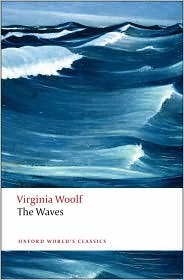Can you ever read a prequel for its own sake? Reading Red Horses by Donna Lynch, I knew it was a prequel for Lynch’s debut novel Isabel Burning and that it elaborates on the history of the Grace family. But having not read the other book, I was interested to see if Red Horses could be successful on its own merits.
Does the Book Stand on its Own?
The first few pages of the book are very compelling. You are introduced to Anastascia Millerovo, a “carrier of souls” days after her father’s death in Victorian London. She visits his attorney to find that she has inherited a large sum of money, her father’s journal, and a husband should she choose to accept the young Mr. Grace. I presume that’s where this book ties to Isabel Burning in that this is the origins of that family. It feels like Lynch chose for this prequel to go straight to the ancestry without mucking about interweaving this story with the last. I’m grateful for that, because it did allow me to read this book on its own, even though the fact that it is a prequel never left my mind.
Is the Writing Good?
Lynch creates some compelling characters in this tortured family saga. Much of the action of the book takes place inside Vladimir Millerovo’s journal as he meets and falls in love with Anastascia’s mother. But it’s not a simple love story and there is as much hate as there is love between the characters. It’s interesting to watch the lovers travel from hardship to hardship across Europe and eventually to the Caribbean. I did wish I got to know Anastacia more throughout the book, because the introduction to her was so compelling.
The description can be a little over the top sometimes with it’s magical moodiness, especially if you’re used to literary fiction, but it doesn’t go too far for my tastes and I enjoyed reading this type of book again for the way that magic opens up a world. Sometimes I even wanted it to be more magical and to really see what Anastascia’s powers could do.
And there were times when I wanted to slap Anastacia’s mother for not taking more control of her life, but it’s never fair to judge a Victorian woman’s circumstances by modern standards.
Will You Want to Read More?
Yes. I’m not quite sure how Isabel fits into this whole scenario. I did want to see if Anastascia’s powers develop more in Isabel Burning and now that I’ve read the backstory, I’m very curious to see where Lynch’s initial inspiration lay.
Red Horses will be released in August, so you have time to read Isabel Burning first if you want to, but it’s not necessary. The book is currently available for pre-order directly from the publisher.
 Frequent readers of this blog will know how much I appreciate spare language. Inner China by Eva Sjödin and translated from the Swedish by Jennifer Hayashida shows brilliantly just how much horror can be wrought with the sparest of language. The story of two small children who hide in the woods to escape sexual abuse is remarkably restrained. And therein lies the power of this poetry.
Frequent readers of this blog will know how much I appreciate spare language. Inner China by Eva Sjödin and translated from the Swedish by Jennifer Hayashida shows brilliantly just how much horror can be wrought with the sparest of language. The story of two small children who hide in the woods to escape sexual abuse is remarkably restrained. And therein lies the power of this poetry. Micheline Aharonian Marcom once said to me that books teach you how to read them, and though I was lost when I opened The Waves by Virginia Woolf, I fumbled onward until, as Miłosz would have said, “I surrendered and it carried me and I swam.” As the best books will do, this book challenged me as a reader and writer and made me think hard about my own life.
Micheline Aharonian Marcom once said to me that books teach you how to read them, and though I was lost when I opened The Waves by Virginia Woolf, I fumbled onward until, as Miłosz would have said, “I surrendered and it carried me and I swam.” As the best books will do, this book challenged me as a reader and writer and made me think hard about my own life.